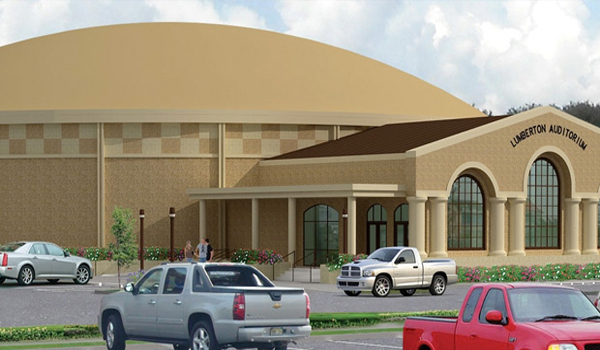Adan Salazar
Welcome to the FEMA-dome
“Officials have started construction on one of their safe rooms,” reports KRGV. “They’re expected to be completed in a year.”
The Federal Emergency Management Agency is offering partial funding for construction of “safe domes” across Texas’ southern coastal region that will purportedly serve to shelter area emergency first responders and citizens “that are very difficult to evacuate in hazardous weather events.”
FEMA is supposedly footing a majority of the bill for the Texas Safe Shelter Initiative, an ambitious program started in 2010 which sought to erect about 35 expensive, domed structures in communities along the state’s coastline.
Many of the domes, which can cost small towns anywhere from just under a million dollars to more than $10 million, will ideally be outfitted with generators, trucks and emergency supplies, and can hold anywhere from 1,000 to 4,000 people depending on the circumstances. They will also double as community centers and gymnasiums while they’re not being used for emergencies.
The largely federally-funded igloo-like buildings have already cropped up in Central Texas towns like Edna, with a population of under 6,000, and North Texas towns such as Kountze and Lumberton, where the project already proved to be a boondoggle for the local economy.
Earlier this year in March, Lumberton ISD Superintendent John Valastro revealed the district had only secured partial funding to begin construction on the town’s Performing Arts Center dome, located near Lumberton High School.
In a stunning admission, Valastro told the Beaumont Enterprise the district opted to go ahead with the $9 million project, knowing full well they would be $4 million short before construction was completed.
FEMA had enticed Lumberton school officials by offering a $3 million grant towards the dome’s construction.
“When people say, ‘Why did you start something you can’t finish,’ well, I can give you three million reasons,” Valastro told the Enterprise. “$3 million from a grant is something we weren’t going to get again.”
While the auditorium did eventually get built (it’s touted on contractor ABCDomes.com‘s website), the FEMA money was only applied to construction costs and materials, leaving the town on the hook for $6.5 million to complete the project.
What’s worse is FEMA funds are “reimbursement grants,” meaning local municipalities have to “weather” the costs until the federal government decides to loosen its purse strings.
There are also questions regarding the domes’ costs compared to their efficiency. In Texas’ Rio Grande Valley, for instance, the nine domes being built, using tax payer funds, would only have the capacity to shelter 2.8 percent of the area’s population (about 36,000 people, according to census data). The rest would have to hunker down or endure heavily-trafficked evacuation routes.
Moreover, during emergencies the domes will only be used to house special populations: mainly city officials and first responders, and lastly displaced citizens.
For many, FEMA and “domes” will forever be inextricably linked ever since the agency’s bungled response to the 2005 Hurricane Katrina crisis in New Orleans, where for several days thousands of people crammed into the ill-equipped Louisiana Superdome.
During that debacle, between 15 and 20,000 evacuees packed the stadium previously used to house sporting events, suffering through unsanitary conditions and rampant violence and criminality. The structure lacked basic necessities like food, water and electricity, and several people died.
In the aftermath of the catastrophic event, FEMA leaders admitted in federal testimony that calls for help regarding the dire circumstances inside the dome were ignored, even when officials were told that several people inside were “near death.”
In light of its shoddy-at-best track record, FEMA’s move to match funds for “safe domes” is seemingly a further attempt by the federal government to dig its talons into small, rural communities under the guise of providing “safe” structures.
Despite that many will perceive the domes to be cleverly-disguised “FEMA camps” – which could potentially be used to shelter destitute populations during emergencies, such as a financial collapse – they also provide ample opportunities for the feds to weasel into Smalltown, USA and squander its pocketbooks.


